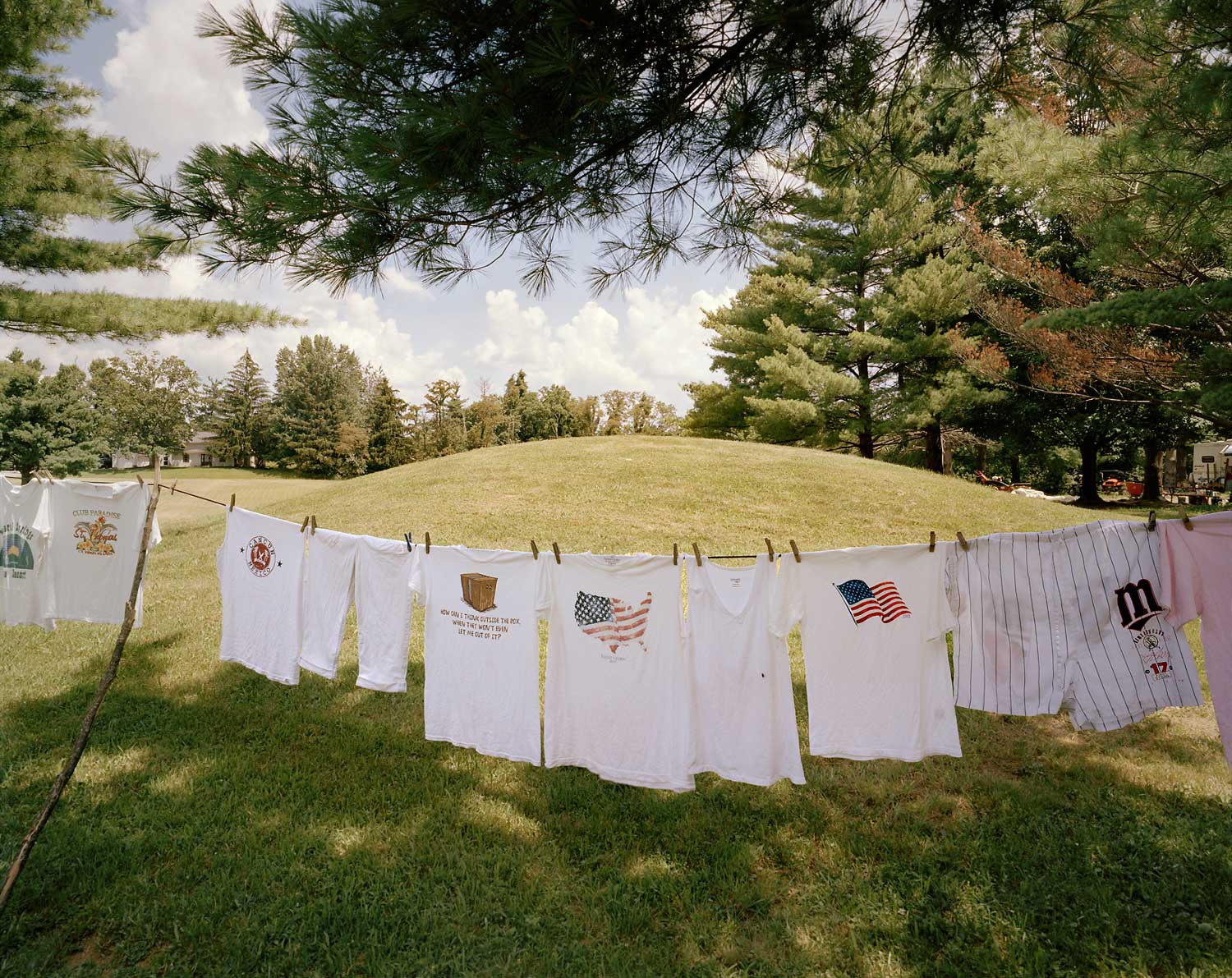Vanishing Points
24x29 in. and 32x40 in. archival pigment prints, 2011-2019
In artistic terms, a vanishing point is an optical illusion. The lines receding into the distance are meant to create depth on an otherwise flat surface. However, they never really disappear. The further you follow them the deeper it takes you into the scene.
Shortly after moving to Morgantown, West Virginia, I discovered that a local shopping center had been built upon an 800-year-old sacred burial ground and village site associated with the Monongahelan culture. I’d frequently shopped at the Center and this new revelation transformed my understanding of the landscape and place I called home. Reflected in the scene in front of me was an ancient, spiritually important, and hallowed landscape clouded by the tangible constructions of modern Western culture. I was compelled to photograph the site and the resulting image sparked a decade-long project exploring a sometimes dark and seldom told account of American history.
In the name of Manifest Destiny, Westerners expanded the reach of settler colonialism across America, claiming the land was theirs by Divine right. Modernization and what settlers deemed to be “civilization” swept across the country, nearly eradicating entire Native cultures in their path. As a white, non-Native citizen of this country, I grapple with the legacy of my ancestors and my own indirect impact on Indigenous Americans. However, my intentions with the Vanishing Points project are not about righting the wrongs of history. I’m merely trying to reckon with my own physical and spiritual presence on the land I call home, while attempting to unwind, or address our collective cultural amnesia. Although these pictures record sites of historical importance or trauma, Vanishing Points is not just about the past. It’s about re-considering these events in the present and the future. It’s about who we have been, who we are now and who we can become.
PRESS LINKS
INSTALLATION VIEWS
Land Acknowledgment
Some of the photographs in this series were made on the lands of sovereign Native nations, including the Apsáalooke (Crow), Diné (Navajo), Oglala Lakota (Sioux), Miiti Naamni (Mandan), Awadi Aguraawi (Hidatsa), and ačitaanu' táWIt (Arikara). Many of the other photographs were made on Indigenous lands that were ceded to, seized, or stolen by the United States government through treaty and federal statute. Please consider donating to organizations that protect and support sacred sites and Indigenous sovereignty, such as:
Association on American Indian Affairs
This project is presented with financial assistance from the West Virginia Department of Arts, Culture and History and the National Endowment for the Arts, with approval from the West Virginia Commission on the Arts.









































